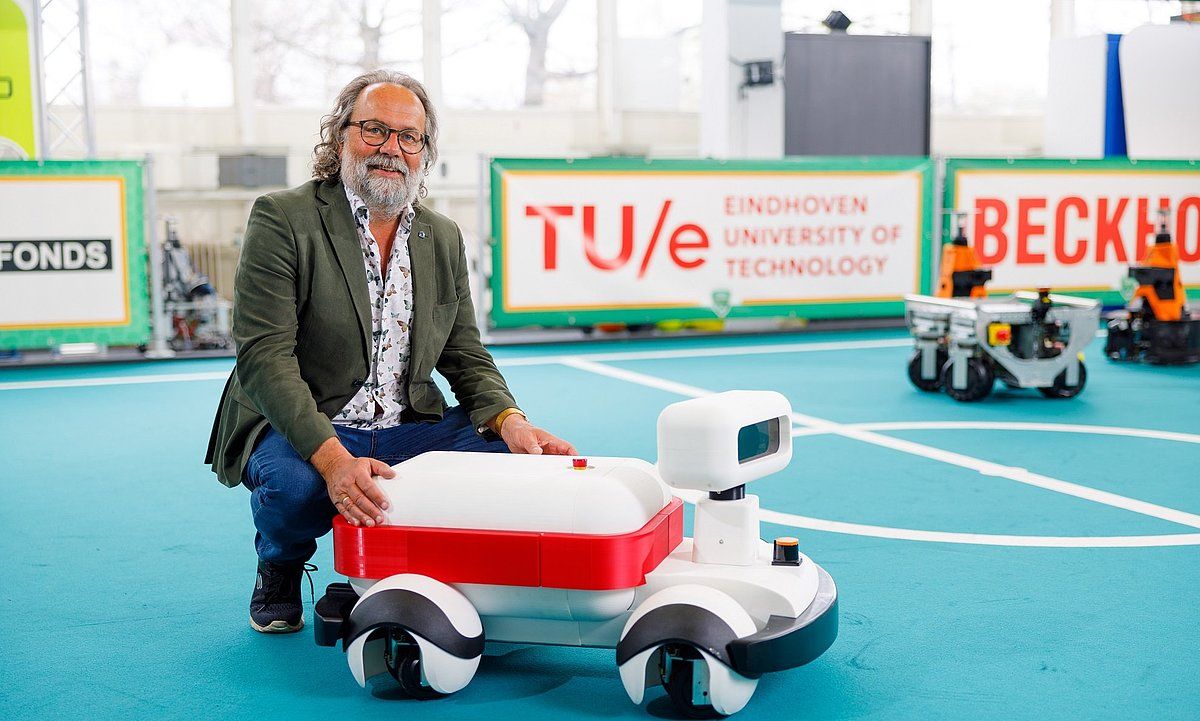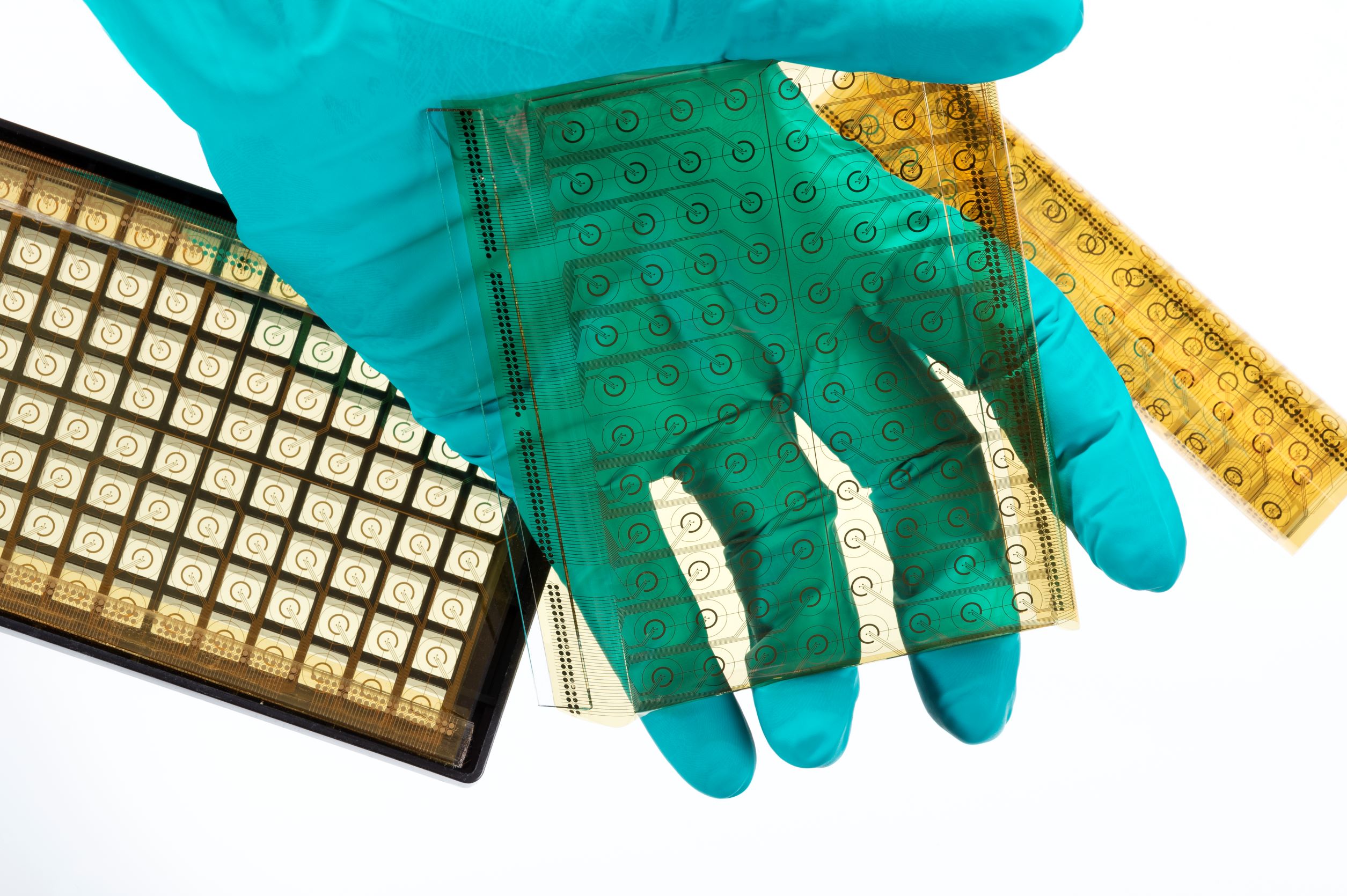
Twenty years ago, Maarten Steinbuch, professor of Systems and Control at Eindhoven University of Technology (TU/e), saw a surgical robot from the United States at work for the first time. Just a small tap caused the robotic arm to wobble. “We can do better,” was the scientist’s first thought. The seed was planted: the Brainport region is the best in the world in building high-tech machines and precision mechatronics. ASML is the largest high-tech company on the stock market in Europe. Why isn’t the region doing anything in the field of medical robotics? Twenty years later, Steinbuch’s medical robotics research group has spawned several start-ups and spin-offs.
In the meantime, he is no longer a full-time scientist but divides his time between work for the university, his directorship at Eindhoven Engine, and numerous other activities – such as writing columns and advising companies.
‘Let’s hit the market’
It started with an alternative to the American Da Vinci robot. Steinbuch talked with Professor Ivo Broeders, the first surgeon in the Netherlands to work with a Da Vinci robot, about what else he would like to see. Three concrete questions came out of this: the surgeon wanted extra mobility at the tip of the instrument, so he can work ‘around corners’ and can operate more effectively in hard-to-reach places in the body. Besides that, the robot should be able to be installed more quickly, and it needed force-sensing resistors.
Steinbuch subsequently submitted a grant application to NWO Domain Applied and Engineering Sciences (in Dutch: NOW-TTW then NWO-STW) and, together with Ph.D. student Linda van den Bedem, worked to develop a robot that meets the above criteria. “Let’s hit the market, let’s start a start-up, I thought at the time. That turned out to be a bridge too far. We had a direct competitor in America and you need a lot of money to be able to compete.”

World first
Around that time, he also – together with ophthalmologist Marc de Smet – started discussions with the Netherlands Organisation for Applied Scientific Research (TNO) about a robot for eye surgery. In that field, robots have to be better and more accurate. He sought another doctoral student and applied for a grant application. This was successful and the first spin-out, Preceyes, was born. With the help of expertise from the industry in the Brainport region, the idea was transformed into a product. “Then it really caught on. More and more surgeons started approaching me.”
René van der Hulst, a microsurgeon from Maastricht, is one of them. During the long, complicated surgeries he performs, he often suffers pain in his neck. Steinbuch’s group, together with Maastricht UMC+, developed a robot equipped with two arms, which make the surgeon’s movements much more precise. This has led to the world’s first super-microsurgery procedure that uses ‘robotic hands’ and to the establishment of the Microsure start-up.
The third spin-off that TU/e has since transferred several patents to, is Eindhoven Medical Robots. Together with partners from the region they are working, among other things, on a bone-cutting robot. “All of this fits in with what we want to do. Into that dream I had twenty years ago about a new industry of medical precision robotics in the Brainport region.”
Long-term vision
Steinbuch calls conducting research within the walls of the university ‘essential’ – it’s creative, independent and any outcome must have added value in a scientific sense. But to really be able to make a difference in healthcare is quite a different story. “As a researcher, it’s important to listen very carefully to the problems from actual practice. To be blunt, you should not start a project solely from your own research interests. For all the medical robotics that we have developed, we have listened to problems that healthcare personnel, suppliers and companies experience.”
The way cables are routed through a robot, for example. That may not matter so much for a prototype, but for a manufacturer producing a thousand robots it certainly does. Steinbuch: “The bottom line is that if we want to make an impactful contribution faster, at the university we have to think further than just the prototype.”

But, regardless of how carefully he listens to healthcare personnel, subcontractors and suppliers, and companies, the fact remains that they do linear research at the university. “It’s important that Brainport sets out a long-term vision for the region. And also, to justify retroactively what needs to be done right now in order to reach that goal in five years from now. This will enable us to already take that all into account at the beginning of the chain as much as possible in our research. That ultimately strengthens the innovative power of the entire region,” Steinbuch explains.
Digitalization and technologization of healthcare sector
Digitalization and technologization of the healthcare sector – and with it the MedTech sector – are facing an enormous challenge. “We already know that when I am eighty, there will not be enough healthcare staff. The only solution to that problem is to allow people to live independently at home for as long as possible. That can only be done with the help of digitalization and technologization of the sector. Brainport has everything in house to play an important role in this respect.”
“In the Netherlands, we don’t dare invest in deep tech start-ups that require a lot of money and a lot of patience. Investors too often want to see short-term results; that’s not how it works in this sector.”
Maarten Steinbuch
As an example, Steinbuch cites preventive healthcare, where gadgets are being developed that can be worn on the body and provide feedback. Or curative healthcare, whereby among other things, Philips is developing ever-smarter CT scanners and MRI devices. “Roboticization is also crucial to making sure healthcare remains affordable,” according to the professor. He believes that the Brainport region has a unique proposition at its disposal when it comes to medical robotics. “In Brainport, we are capable of making the very best medical robots in the world. That’s something I know for sure. That’s how precise we are.”
Deep tech
How come Brainport is so good at it – compared to, for instance, the United States? Steinbuch’s answer is resolute: “We as a region are just incredibly good in the precision manufacturing industry in which systems integration and mechatronic brainpower are essential. Just think of large companies like Philips, ASML and Canon and suppliers such as VDL, NTS, Sioux. Around them is a large, strong ecosystem of small(er) companies.”
Yet, according to Steinbuch, something else needs to change before Brainport is able to make the best medical robots in the world. “In the Netherlands, we don’t dare invest in deep tech start-ups that require a lot of money and a lot of patience. Investors too often want to see short-term results; that’s not how it works in this sector.” Steinbuch, a man of deeds, is mulling over establishing a Brainport Alumnus Fund specifically for this kind of investment. “We need to put our shoulders to the wheel together,” he concludes.

